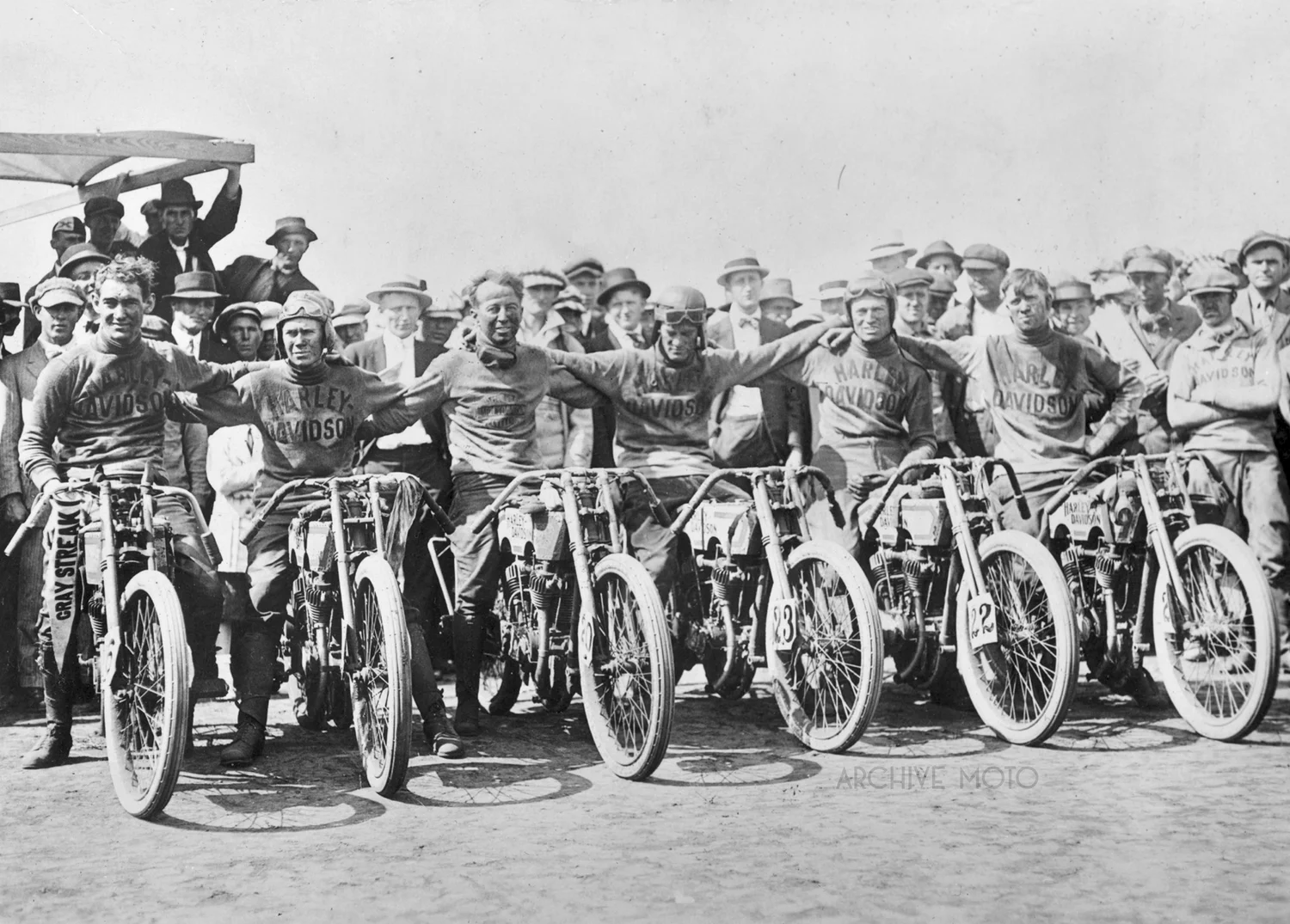Possibly one of the rarest American motorcycles ever assembled, the Cyclone powered, OHC Reading Standard factory works racer is photographed here with legend Ray Creviston on the company dock in 1921. Beginning in 1903, Reading Standard began manufacturing high quality American motorcycles known for their durability, and from the start the Pennsylvania based company garnered accolades for their performance on the track.
By the teens many of the numerous American motorcycle manufacturers had begun to fade away leaving those with stakes in the racing game like Reading Standard, Indian, Excelsior, Flying Merkel, and a rising Harley-Davidson to grow even stronger. Commonly known as the "big three," Harley-Davidson, Indian, and Excelsior turned their dominance on the track into expansive distribution networks and iconic marketing campaigns. As a result Reading Standard, without the ever deepening pockets of their rivals gradually lost their competitive edge despite seeing their best sales years in the late teens. Riding a wave of enthusiasm as a result of the highest production numbers in the companies history, RS attempted to revitalize their company by developing a pure racer in 1921. The American motorcycle scene had become intensely competitive after WWI, and RS had to raise the stakes if they were going to compete with the race-proven thoroughbreds of Harley-Davidson and Indian. Unlike any other machine being produced by the company at the time, this unique cam driven overhead valve engine was actually salvaged from the parts bins of the once mighty Cyclone company, who closed their doors in 1916.
Creviston shipped out to Los Angeles in January of 1921 with the hopes of riding the new motorcycle to victory, a move the company hoped to reestablish the brand as a major player in the United States. A great deal of interest and speculation surrounded the new RS, everyone was curious as to the speed and performance given the combination of the esteemed reputation of RS with the high end performance of the Cyclone power plant. However, Creviston, who along with Dave Kinnie were instrumental in the development of the machine kept information about the its capabilities rather quiet, wanting to let the anticipation build until people, and journalists could witness it for themselves. His first stop on the west coast tour was set for the mile long Fresno Speedway board track, where early reports clocked him at over 100 mph. The machine’s debut at Fresno unfortunately began the sequence of heartbreak for Creviston and Reading Standard as the new hopeful heavyweight fell short due to technical issues with the motor. And as if to add insult to injury, Otto Walker, Captain of the legendary Harley-Davidson Wrecking Crew decimated the competition that day becoming the first man to officially claim a race victory at an average speed of over 100 mph on board a “banjo” 2-cam, 8-valve HD.
Unfortunately the machine could not shake the bad luck it experienced at its debut at the Fresno Speedway, and the subsequent races that Creviston entered most often resulted in mechanical failure. The wave of hype that preceded Creviston and his wonderful Reading Standard crested and broke as the machine consistently limped into the pits with the same mechanical issues that plagued Cyclone engineers in the teens. Despite a grand effort and by Creviston and the RS crew, the 1921 season came to a close without a single win. Sadly, the effort that was meant to bolster a struggling company in-turn drained the limited coffers of the Pennsylvania based Reading Standard and by 1922 the company was preparing to close its doors. Creviston went on to pen a contract with Indian, and in February of 1923 it was announced that the Cleveland Motorcycle Manufacturing Company had acquired Reading Standard, putting an end to the fourth longest running American motorcycle manufacturer, the prestigious Reading Standard.
Meet the young Benjamin Thomas Epps, a true American pioneer with a vigor for all things mechanical. A Georgia native, by the time Ben had turned 17 he had abandoned his studies at the Georgia Institute of Technology and returned to his home to Athens in order to pursue his passions. To support himself and his growing family he opened a fistful of businesses in downtown Athens including an electrical contracting business, a bicycle shop, and the town’s first auto garage. Three years later, the still teenaged Epps finished construction of a prototype aircraft assembled from bicycle components, a twin cylinder 15hp Anzani motorcycle engine, and wings sewn together by his mother. His design is credited as one of the first to use wheels to aid in take-off and landing, as well as the use of a buggy seat allowing the pilot to sit upright. With his first successful powered flight in 1907 Epps not only became the first man in Georgia to take to the sky, but he earned his place as one of America’s earliest aviation trail blazers. Here young Ben Epps stands with his Yale motorcycle inside his bicycle shop in downtown Athens, GA ca. 1907.
Read more about the life of Ben Epps in the pages of Georgia Motorcycle History: The First 60 Years 1899-1959 available now HERE
A great image of five men lined up with their orange and blue Flying Merkels, most likely taken in Manitoba in 1911 around the same time as the founding of the Manitoba Motorcycle Club, Canada's oldest MC.
A glimpse into the Hendee Manufacturing Company's stock room in the early spring of 1904. Here, roughly 60 of the reported 596 Indian's built in 1904 await shipment after a thorough assembly and testing process. Though the power plants were the design of Indian's engineer Oscar Hedstrom, they were actually cast at the Aurora Manufacturing Company facility, makers of Thor motorcycles in Aurora, Illinois. It was at the Aurora factory that the engines for roughly 4,000 Indian motocycles were made under contract between 1902 and 1907. Once the engines were delivered to Springfiled, they were disassembled, inspected, and reassembled along with the remaining components. Hedstrom himself closely supervised the process of installing and tuning the carburetors, making sure each machine was perfectly dialed in. Once fully assembled the machines underwent two road tests before being returned for a final cleaning and stacked up in the store room seen here.





